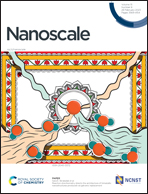Abstract
Graphene quantum dots (GQDs), as one of the most promising luminescent nanomaterials, have been receiving increasing attention in various applications. However, it is still a challenge to improve their chemiluminescence (CL) quantum efficiency. Herein, the CL emissions of nitrogen- and sulfur-doped GQDs (NS-GQDs), nitrogen-doped GQDs (N-GQDs) and undoped GQDs synthesized through one-pot high-temperature pyrolysis are investigated in their chemical reactions with bis(2-carbopentyloxy-3,5,6-trichlorophenyl) oxalate (CPPO) and hydrogen peroxide (H2O2). A bright blue emission, and yellowish green and yellowish white light from NS-GQDs, N-GQDs and GQDs can be observed, respectively, in the mixture solutions with CPPO and H2O2. For the first time, spooling CL spectroscopy was used to investigate the CL reaction mechanisms, illuminant decays and the absolute CL efficiencies of these three GQD systems. Compared with the same system of undoped GQDs, it has been found that the NS-GQDs not only present slower illuminant decay, but also display an absolute CL quantum efficiency of 0.01%, 5-fold enhancement, due to the increase in N and S doping for a well-defined band gap energy. Moreover, three peak wavelengths attributed to intrinsic emission at 425 nm, aggregation-induced emission (AIE) at 575 nm and S-doped emissive surface states at 820 nm are observed for the first time in the NS-GQD system. The CL spectrum of N-GQDs displays two emission peaks at 395 and 575 nm attributed to intrinsic emission and AIE, whereas the CL spectrum of undoped GQDs demonstrates 500 nm and 600 nm peak wavelengths attributed to core emission and AIE. Absolute CL quantum efficiencies from these emissions at these various peaks can be determined quantitatively. This study provides guidance on tuning the surface states of GQD for more conducive injection of electrons and holes, facilitating the production of CL emission, which is beneficial for promoting the development of optical, bioassay and energy conversion applications.

- This article is part of the themed collections: Celebrating International Women’s day 2024: Women in Nanoscience, Nanoscale and Nanoscale Horizons: Carbon-based nanomaterials and New horizons in materials for energy conversion, optics and electronics


 Please wait while we load your content...
Please wait while we load your content...